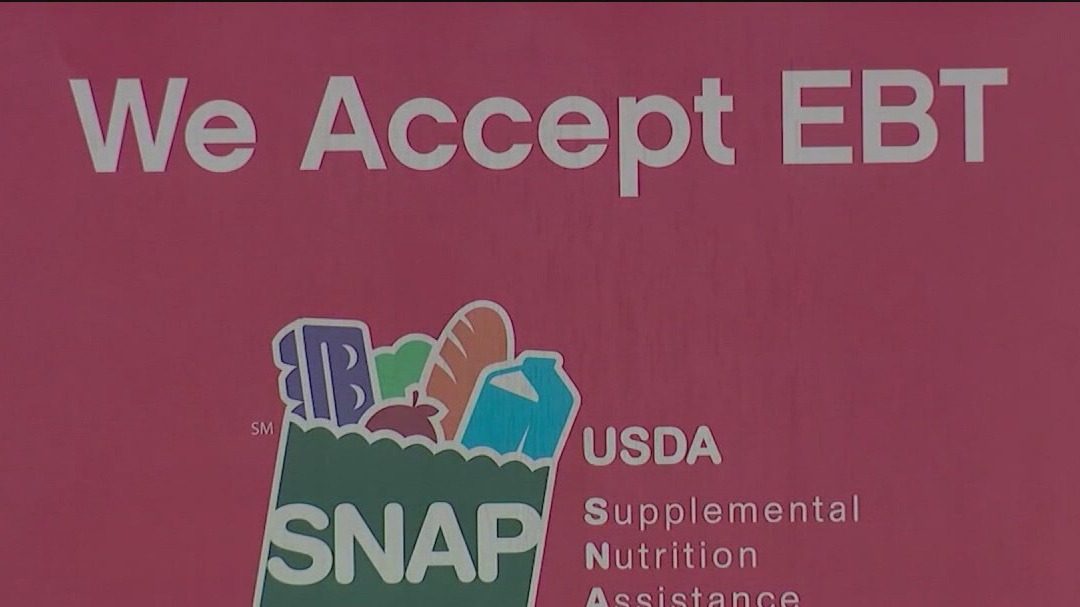 Bay Area food banks brace for surge as SNAP suspension nears
Bay Area food banks brace for surge as SNAP suspension nears
Food banks across the Bay Area are preparing for a surge in demand as millions of Americans brace for a suspension of federal Supplemental Nutrition Assistance Program (SNAP) benefits, a consequence of the ongoing government shutdown. Rep. Mark DeSaulnier, D-Concord, hosted a town hall Thursday night in Martinez to address mounting concerns over the shutdown’s growing impact. The congressman expressed little optimism that lawmakers in Washington would reach a deal soon to end the impasse.
OAKLAND, Calif. – The Supplemental Nutrition Assistance Program, or SNAP, helps about one in eight Americans buy groceries.
A halt to SNAP benefits would leave a gaping hole in the country’s safety net. Vulnerable families could see federal money dry up soon for some other programs, as well — from certain Head Start preschool programs to aid for mothers to care for their newborns through the Special Supplemental Nutrition Program for Women, Infants, and Children, known as WIC.
In California, SNAP is called CalFresh.
The US Department of Agriculture said SNAP debit cards beneficiaries use to buy groceries will not be reloaded as of Nov. 1.
Here’s a look at the SNAP shutdown by the numbers:
Lack of funds for SNAP benefits could affect millions
A total of 42 million Americans receive SNAP benefits.
Most SNAP participants are families with children, more than 1 in 3 include older adults or someone with a disability, and close to 2 in 5 are households where someone is employed. Most have incomes below the poverty line, about $32,000 for a family of four, according to the Center on Budget and Policy Priorities. The USDA says nearly 16 million children received SNAP benefits in 2023.
The average monthly benefit is $187 per person.
Beneficiaries say that without the aid, they’ll be forced to choose between buying food and paying other bills. Food banks are preparing for a spike in demand that they’ll have to navigate with decreased federal aid themselves.
Not everyone receives their SNAP benefits on the first day of the month, though many beneficiaries get them early in the month, with some differences by state.
California CalFresh recipients
In California, there are 5.5 million recipients on CalFresh, and 500,000 living in the Bay Area.
Bay Area CalFresh
In the nine-Bay Area region, a map of Census Bureau data shows the breakdown of CalFresh recipients. All the counties have either 10 percent or less of their residents receiving food stamps.
Alameda County 593,117 households, 8.7%
Contra Costa County 411,662 households, 7.7%
Napa County 49,663 households, 5.9%
Marin County 103,201 households, 4.8%
San Mateo County 264,424 households, 4.5%
Santa Clara County 654,467 households, 5.7%
Sonoma County 190,498 households, 7.3%
Solano County 155,800 households, 10.2%
Some states seeking to fill void of SNAP benefit cuts
Gov. Gavin Newsom announced that California is fast-tracking up to $80 million in state funds, as well as deploying the California National Guard and California Volunteers to support food banks as the ongoing federal government shutdown begins to delay SNAP food benefits.
But at least some California food banks say they don’t want National Guard members’ help, fearing the Trump administration’s use of those troops in mass deportation efforts could scare vulnerable residents from seeking food.
Other states pitching in too
On the West Coast, Washington state said it would send nearly $2.2 million a week to food banks starting Nov. 3 if a deal to end the shutdown is not made by then.
Officials in Louisiana, Vermont, Virginia and Rhode Island have pledged to provide some type of backup food aid for recipients. The USDA says states won’t be reimbursed.
More funding for food banks and pantries is planned in states including New Hampshire, Minnesota, California, New Mexico, Connecticut, New York, Rhode Island and West Virginia.
Early childhood education
More than 130 Head Start preschool programs won’t receive their annual federal grants on Nov. 1 if the government remains shut down, according to the National Head Start Association.
Centers are scrambling to assess how long they can stay open, since nearly all their funding is federal. Head Start provides education and child care for the nation’s neediest preschoolers.
With new grants on hold, a half dozen Head Start programs have already missed federal disbursements they were expecting Oct. 1 but have stayed open with fast-dwindling reserves or with help from local governments. All told, more than 65,000 seats at Head Start programs nationwide could be affected.
Food aid for mothers and young children
Another food aid program supporting millions of low-income mothers and young children already received an infusion to keep the program open through October. But states say that money could run out as early as Nov. 8.
The Special Supplemental Nutrition Program for Women, Infants and Children helps more than 6 million low-income mothers, young children and expectant parents purchase nutritious staples such as fruits and vegetables, low-fat milk and infant formula.
The program, known as WIC, risked running out of money in October because of the shutdown. The Trump administration reassigned $300 million to keep it afloat, but only for a few weeks.

